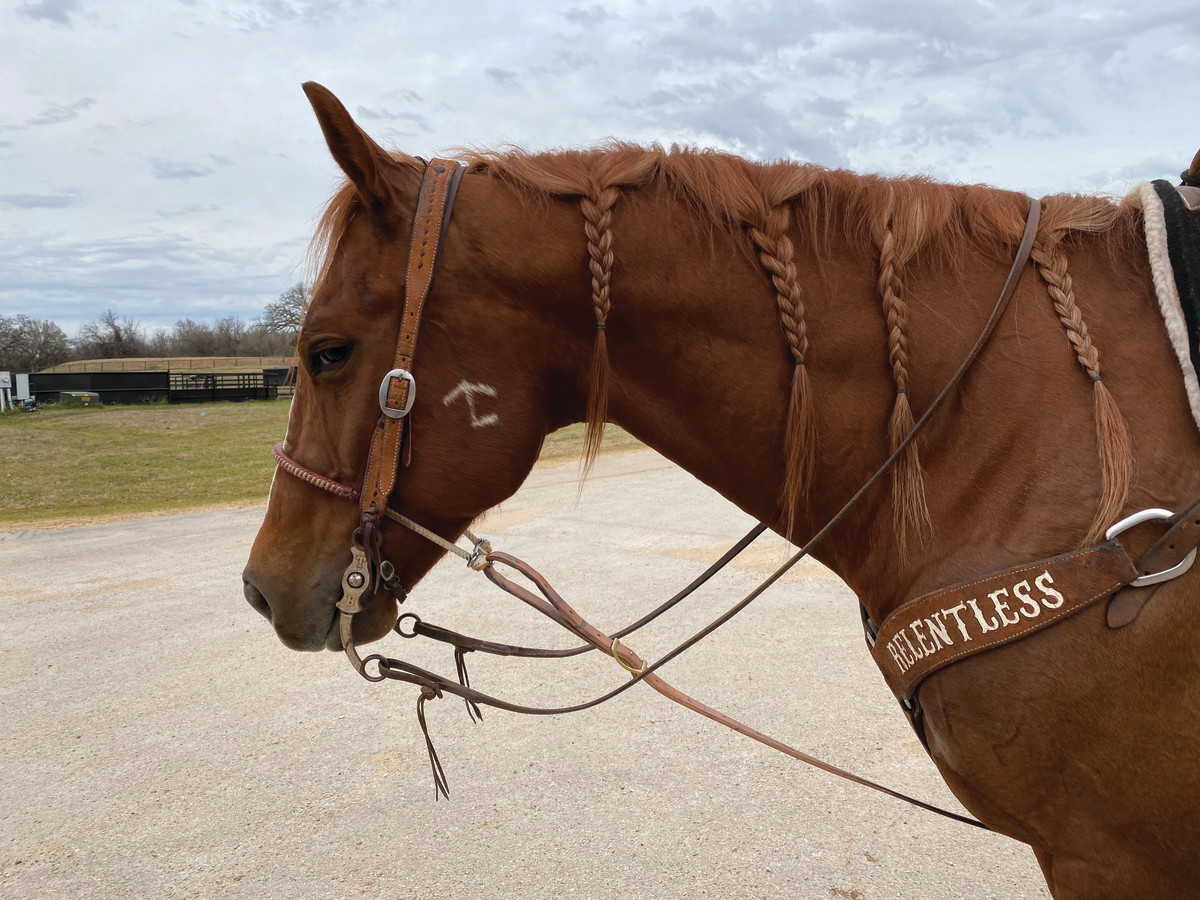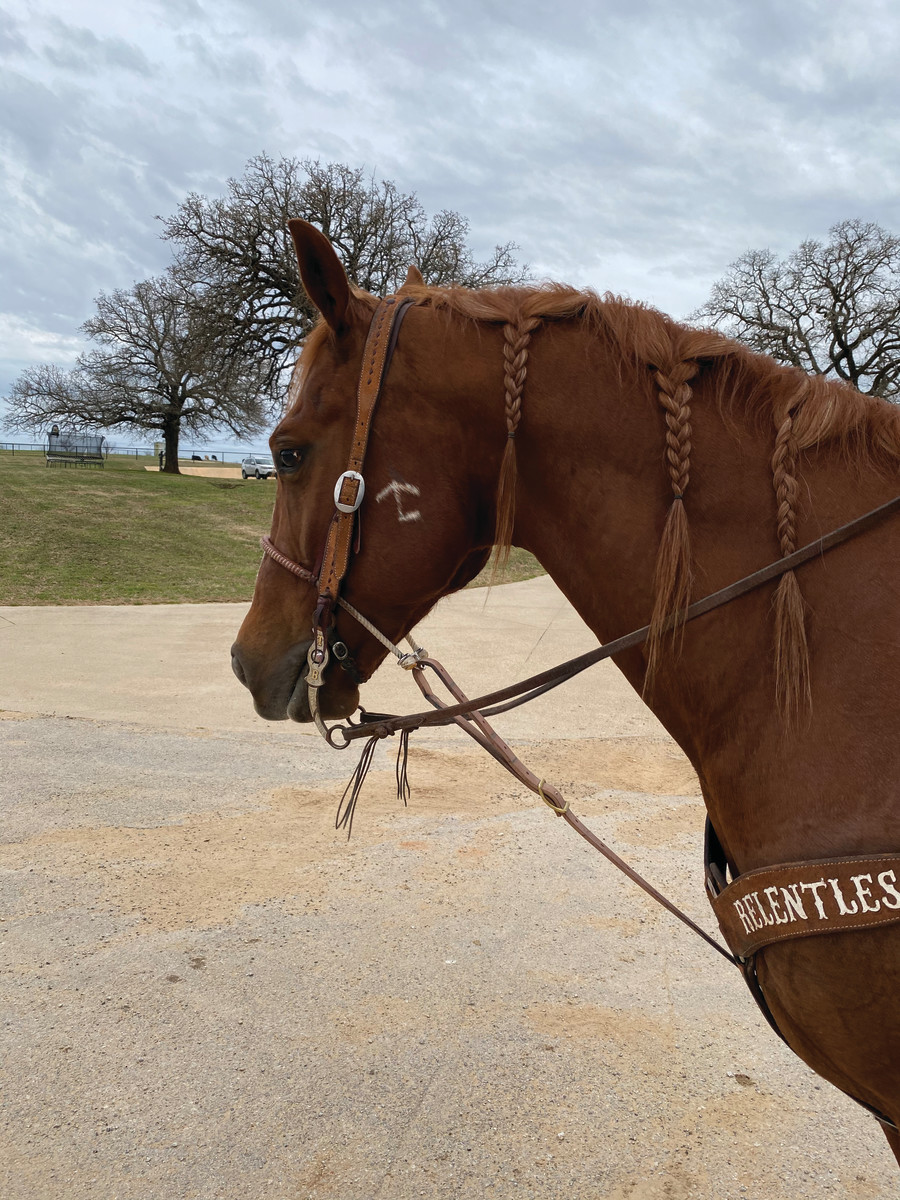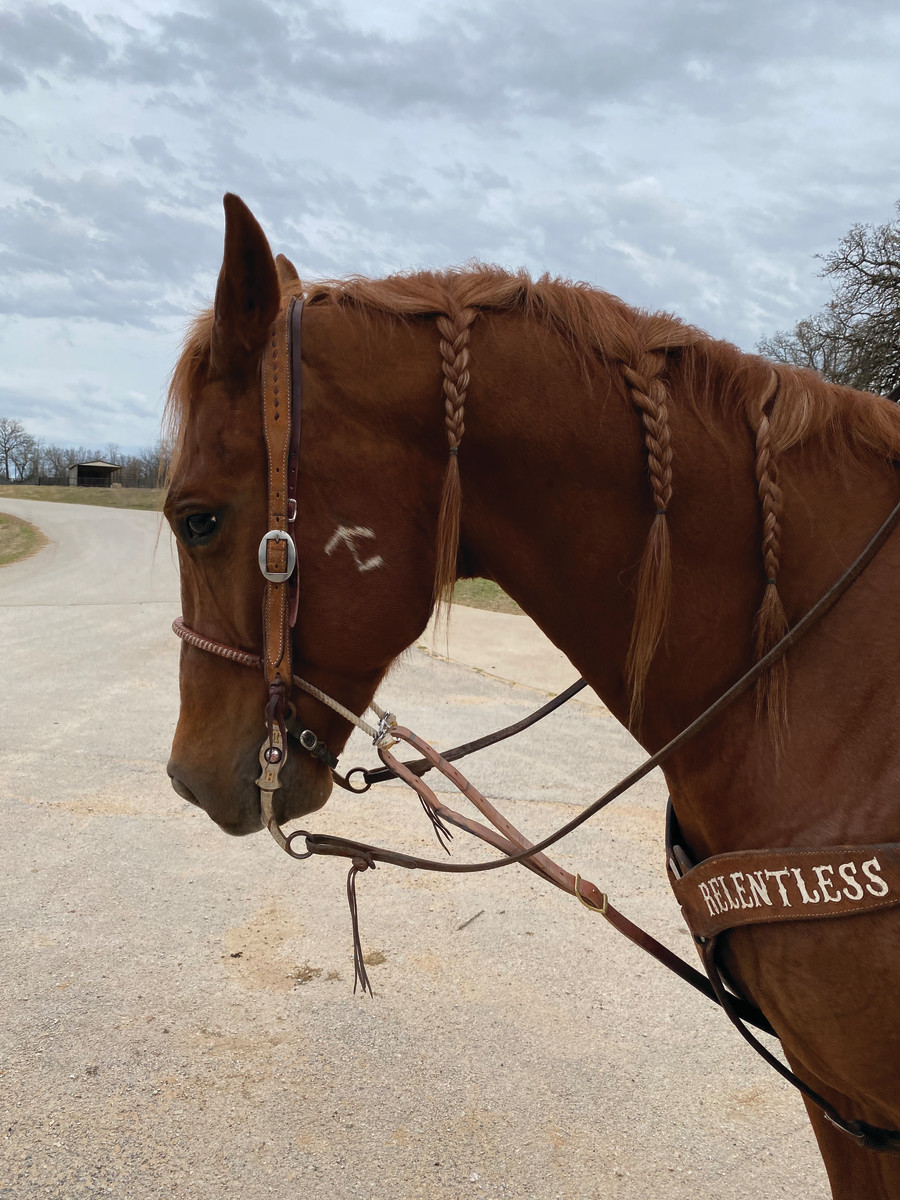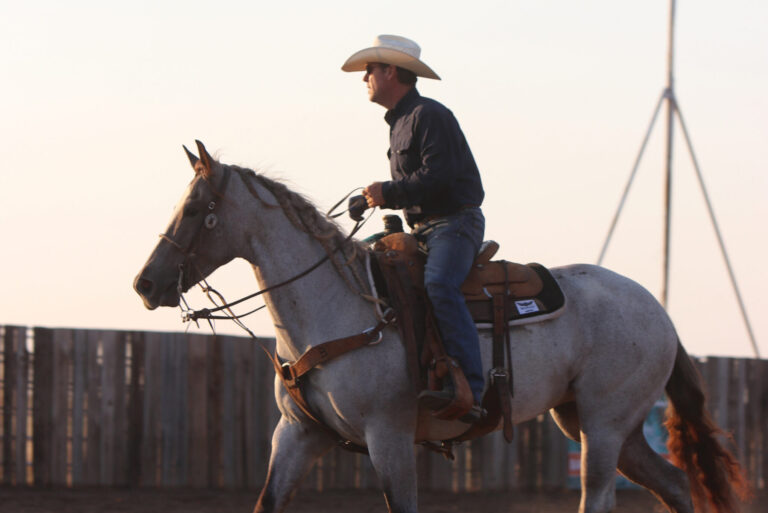Question: “What is Trevor’s guide on tie-down length and proper use? And can he explain when to use a rope tie-down and when to use a leather tie-down?”
— Sara Ocker; Fort Lupton, Colorado
Answer:
The Key
Tie-downs need to be used so horses can’t go too far past a balanced headset but not to set their heads to hold them completely. Horses need freedom to do their jobs and not be restricted the entire time they’re working. It’s easier on the horse—just like everything you’ll hear me say—to give them clear boundaries. Tie-downs are not built to push on the whole time. That being said, there are a lot of horses who have been subjected to a tight tie-down, and wherever you set their head, they’ll hit the end of it because of incorrect riding. If you have a horse like that, sometimes they’re set in their patterns. That’s a bad habit that’s hard to break.

When to Use One
I’ve pretty much got an “always” policy on using a tie-down. Here’s why: When you’re roping, you’re reacting to what the steer is doing, so it’s not like you can get a horse properly set up for each cue you’re doing. You want your horse to react to your hand signals, but there are times when the signal will be rushed, causing your horse’s head to come up. Even if the tie-down is let out to where it’s basically nonexistent, it’s still there just in case.
(Disclaimer: When heeling, you can read situations depending on how wide your pocket is when you enter the corner. That means your cues aren’t as immediate.)
[Read: Horse Care with Trevor Brazile]
[Read: Adding Intensity with Trevor Brazile]
There’s a setting on every tie-down that you can use to make it like you don’t have one. You can set your tie-down up to be practically non-existent if that’s what suits your horse. And in the box, a tie-down is crucial. A horse can’t get away from the pressure as easily when he has a tie-down.

How Tight
I’m not a big supporter of tight tie-downs. Tight tie-downs tend to cause horses to brace with their shoulders as they learn to push on it. A lot of shoulder and back soreness can be attributed to a horse relying on a too tight tie-down, so they get used to pushing into it. You can create a scenario where the horse starts leaning on it because he can’t have a natural headset because it’s too tight. Then there are scenarios of horses that tie in high through the neck and shoulders, and the tie-down looks too tight until they wake up and ride in the box.
Leather or Rope?
While I don’t like my tie-down too tight, I also very rarely use a leather tie-down. I don’t want a horse comfortable bracing on the tie-down, and a leather tie-down can allow for that. I want a horse to know he can’t go past that ideal, balanced headset. If that leather is too comfortable, horses get used to bracing against it. They’ll get stiff in their shoulders, and they’ll start stopping on their front ends or taking jerks on their front ends. That creates more problems with soreness—whether it’s in their backs, necks or shoulders, or in their joints—from the way they’re taking jerks or handling the weight heading.

[Listen: The Score: Episode 2 with Trevor Brazile]
I’d rather have a leather-covered Relentless rope tie-down. I say the Relentless-rope part jokingly, but most rope tie-downs to me are too rigid. My tie-downs are smaller, and they have less crowns that the horse can feel, especially with the leather over it. They know when they hit the end of it, but it doesn’t bite them unless they’re really wanting to test it.
Trevor wants to answer your questions about roping & horsemanship. Email cshaffer@aimmedia.com to have your questions featured in a future issue of The Team Roping Journal.











